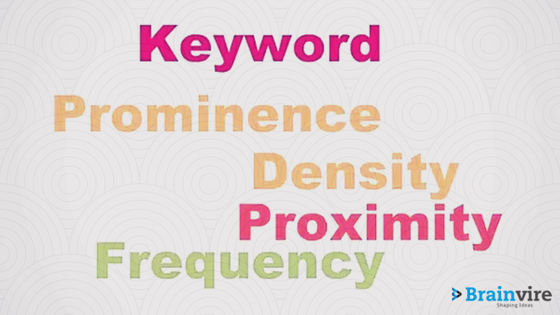So you recently launched a website, huh!
You took all the pains of keyword research and yet are not being favoured by Google.
And still wondering where you made the blunder?
Well, doing mere keyword research and targeting them won’t work, at least not with search engines’ advanced algorithms.
So, placing the keywords is not important but ‘where’ they are placed is IMPORTANT from a search engine’s perspective. It’s a known fact that search engines use their web spiders to crawl through the pages and index them. Needless to say, they look for them at specific ‘locations’ in a logical manner.
In this blog post, we’ll take a look on which are the ‘hotspots’ on your webpage where you can place the keywords to boost your site’s SERPs.
Let’s get started!
Deciding Factors in Keyword Optimization –
Keyword optimization follows keyword research and ultimately comes down (but not limited to) three basic parameters – Keyword Prominence, Keyword Density, and Keyword Proximity.
- Keyword Prominence
This is the first and foremost thing when we talk about keywords’ optimization. It basically refers to how suitably your keywords are placed on a webpage.
Placing keywords at specific spots increase the chances of ranking. These include title tag, heading tags, and meta description.
For example, while designing a page the target keyword should be placed near the body tag. It aids in getting higher prominence.
- Keyword Density
If you were the search engine, how would you feel if a word (keyword) repeats itself, again and again! You would be irritated, right.
So, having an optimal ratio of keywords to the total number of words on your webpage is quite important.
But having said that, search engines have not provided a definite number to stick to. Ideally, 2 to 4% of keywords is recommended.
Keyword stuffing i.e. over use of keywords should be avoided at all times, else it looks as spam to the search engine, and maybe for the visitor too.
- Keyword Proximity
Keywords are of two types – short-tail and long-tail.
Keyword proximity concerns the distance between individual keywords in any sentence on a given webpage. The lesser the distance, the better it is!
It is preferable to have all the individual keywords together.
When designing a webpage or writing content, always keep in mind that you are doing it for your audience, not the search engine! So, a balance between the SEO strategy and quality content should be maintained.
It is always a good option to consult a SEO expert to help you out with your objectives, which will get you closer to your goal.
Related Articles
-
Google Algorithms Vs Google Penalties And How To Keep An Eye Out
Google has worked its way into being the most sought after input box on the entire web since its inception. This is a direction normally monitored by web professionals with
-
What Is Social Media Management And How It Impacts Businesses?
The digital business landscape has evolved dramatically from the day Covid-19 created havoc worldwide. According to Statista, in 2020, the worldwide social media users were more than 3.6 billion, and
-
The Digital Marketing Funnel: Modern Strategies for Each Stage
Digital marketing funnels are the backbone of any digital marketing campaign. A marketing funnel is a process that marketers use to attract and convert prospects into customers. It is a





